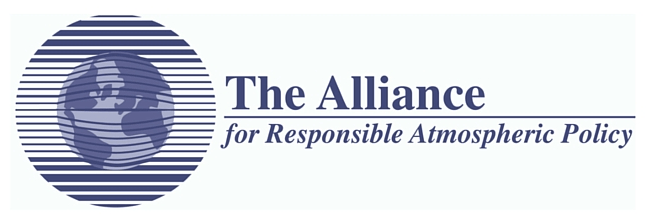News Release from The Alliance

Important Industry Alliance Praises Kigali Amendment to Achieve HFC Phase-down
Kigali, Rwanda (October 15, 2016) — The Alliance for Responsible Atmospheric Policy praises the agreement reached today in Kigali by the Parties to the Montreal Protocol on an historic amendment to phase down hydrofluorocarbon (HFC) compounds by 85 percent between now and 2047, reducing the emissions of high global warming potential (GWP) HFCs by more than 70 billion tons of carbon dioxide equivalent through 2050.
“The Montreal Protocol HFC amendment is a tremendous accomplishment. It continues the treaty’s unprecedented record of environmental achievement guided by continuous technology and economic assessment,” said Alliance Chairman John Hurst.
The Alliance is an industry coalition organized in 1980 to address the issue of stratospheric ozone depletion and the production and use of fluorocarbon compounds. It is the leading voice of manufacturers, businesses and trade associations who make or use fluorinated gases for the global market. Today, Alliance member companies are leading the development of safe, efficient, next-generation, climate- and ozone-friendly technologies and applications.
When ratified and effective, it is projected that the amendment will avoid up to 0.5 degrees Celsius of atmospheric warming, creating a significant down payment on the Paris climate agreement that came into effect earlier this month. Alliance member companies and trade associations have played a major role in the HFC amendment negotiation process. They have worked with governments and industry organizations throughout the world to understand the technology challenges associated with introducing new low-GWP technologies that reduce impacts on the climate and stratospheric ozone, while maintaining an emphasis on health, safety and performance for workers and consumers, including important issues of energy efficiency. “The long-term schedule provides the most confidence to businesses that now is the time to invest in the development of environmentally-friendly, efficient, and high-performance products on a global basis,” added Hurst.
The historic amendment is a major policy step forward in the global effort to reduce greenhouse gas emissions and the threat of climate change. The amendment sets a gradual phasedown schedule for high-GWP HFC compounds, which were introduced more than 20 years ago in an effort to speed the protection of the earth’s ozone layer in both developed and developing countries.
Aside from its technology assessment process and effective financial mechanism, a hallmark of the Protocol is the long-standing cooperation among industry, environmental NGOs, and governments. The Kigali amendment, which has been under discussion since 2009, would not have happened without the far-reaching vision and planning of industry working closely with governments around the world and prominent environment NGOs. The Alliance expresses its appreciation for the tireless efforts of the many government delegations who have worked towards today’s achievement, in particular that of the US under the leadership of EPA Administrator Gina McCarthy and Secretary of State John Kerry.
“Three years ago our industries discussed the challenge and committed to promoting an economically-sensible long-term solution for the growing HFC emissions,” said Alliance Executive Director Kevin Fay. Since then, the industry has worked in close cooperation with the US government and others on analyzing the challenge and developing solutions, including providing significant policy dialogue assistance between industry and governments around the world. “It has been a demanding process, but we remain certain that the results of this agreement will be profoundly beneficial to the global environment and economy,” said Fay.
The Kigali amendment is subject to ratification in the United States, and will formally take affect when 20 member parties to the Montreal Protocol ratify or accept the amendment. The ratification process could take two years.
About the Alliance for Responsible Atmospheric Policy
According to a recent study, the US fluorocarbon using and producing industries contribute more than $158 billion annually in goods and services to the US economy, and provide employment to more than 700,000 individuals with an industry-wide payroll of more than $32 billion. The Alliance represents companies across several sectors engaged in the development of economically and environmentally beneficial international and domestic policies regarding fluorinated gases. Alliance member companies, which represent more than 95 percent of US HFC production and a significant majority of the manufacturing and other user industries, have pledged their commitment to the research, development and commercialization of new technologies with low climate impact, and to supporting a global agreement under the Montreal Protocol to facilitate the orderly transition to such technologies.
Contact: Kevin Fay, Executive Director; Alliance for Responsible Atmospheric Policy
(703)243-0344 (office), 703-801-3233 (cell), fay@alliancepolicy.org
Related link: www.alliancepolicy.org


